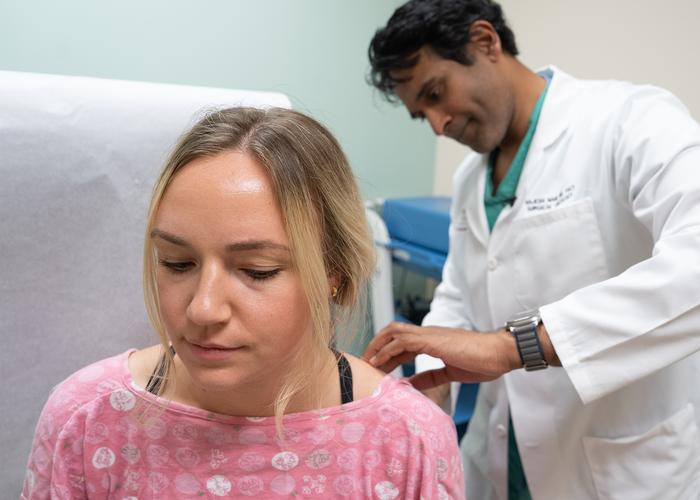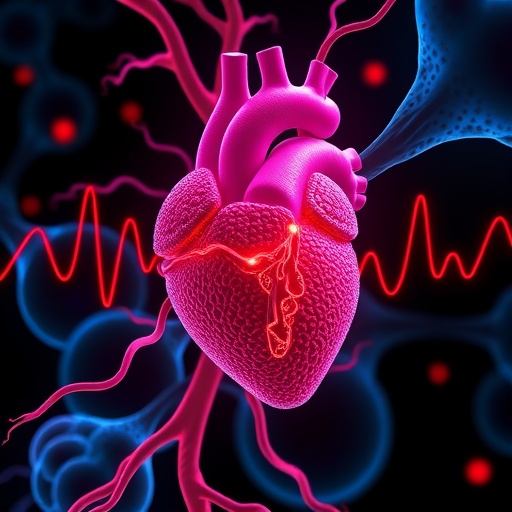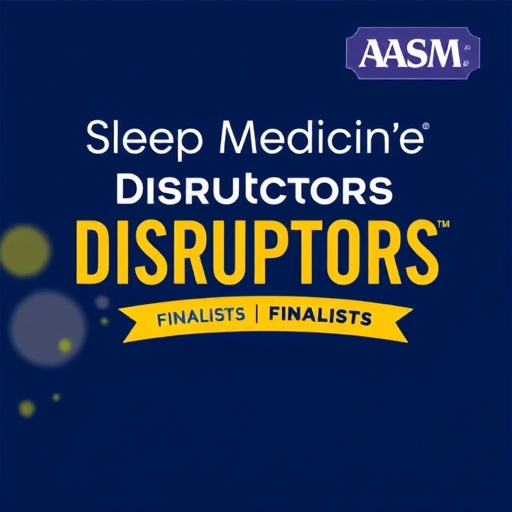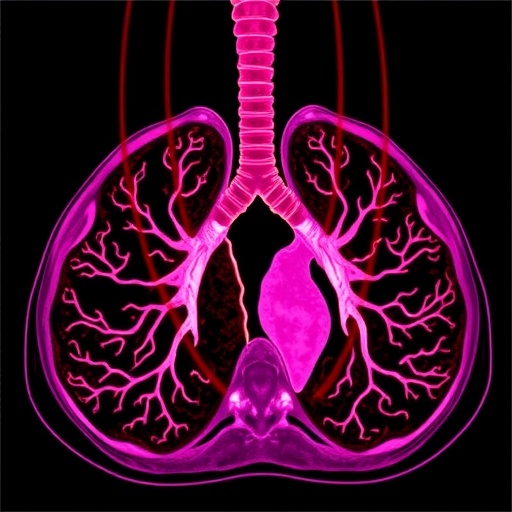Orlando, Fla – A new national survey by the Orlando Health Cancer Institute finds nearly a third (32%) of Americans agree that a tan makes people look better and healthier, a dangerous beauty standard that experts say can lead to risky behavior when it comes to sun exposure.
“There is no such thing as a healthy tan, as it’s really just a visual manifestation of damage to the skin,” said Rajesh Nair, MD, an oncology surgeon at the Orlando Health Cancer Institute. “But we’re fighting against a perceived positive image and health benefits of something that actually has a totally opposite reality, which is that suntanned skin represents an increased risk of a deadly disease.”
The survey, conducted by Ipsos, also found that young adults are likely to believe myths and misinformation on sun protection that may lead them away from proven methods of skin cancer prevention. About one in seven (14%) adults under 35 think daily sunscreen use is more harmful to the skin than direct sun exposure and nearly a quarter (23%) believe drinking water and staying hydrated prevents a sunburn.
“There is no scientific data suggesting that drinking water provides any protection from the sun,” Nair said. “As for sunscreens, the protective benefits far outweigh any known risks, but if you’re concerned about chemicals or ingredients in a sunscreen, mineral sunscreens like zinc oxide that offer a physical barrier to the sun are proven to be safe, as well as clothing with SPF protection.”
Nair says, with so many sources of information—and misinformation—these days, it’s difficult to decipher good advice from the bad.
“We have really hectic and busy lives, and we’re trying to find information to guide us on healthy choices and decision-making to the best of our ability. But the overwhelming number of people and organizations claiming to have the right answers makes it really hard to know what to believe,” Nair said. “Our fear is that people buy into a lot of really dangerous ideas that put them at added risk.”
It’s something Brianna Starr, 29, sees a lot of, with trends on social media spreading quickly and easily.
“I think a lot of people get their information from TikTok, Instagram, Twitter, that might not be actually legit,” Starr said. “And you’re very influenced by your friends and peers, so you see a video or hear something from your friend, you’re like, ‘Oh, yes. I need to try that,’ and you believe it.”
Starr admits that skin cancer was not top of mind in her teens and twenties and was more concerned with getting a golden tan as she laid out in the sun sans sunscreen. But after her sister was diagnosed with melanoma at the age of 19, she got serious about protecting herself.
“There is a history of melanoma in my family, and so I started seeing a dermatologist every six months and actually flagged two separate moles, one on my neck and one on my shoulder, that were dysplastic and could have developed into melanoma.”
Starr is now diligent about applying and reapplying sunscreen whenever she’s outdoors. Experts recommend using sunscreens with an SPF of 30 or higher and reapplying it every two hours, especially if you are sweating or are in the water.
Regular skin cancer screenings with a dermatologist or your primary care physician are also critical to catch any developing skin cancer early.
“Unfortunately we’re seeing skin cancer more and more in patients of a young age. And because it’s something that’s often not on their radar, it tends to be diagnosed in more advanced stages,” Nair said. “We don’t want to discourage people from being outside and being active because there are so many health benefits to that, but it’s also important to know that sun protection can be lifesaving, and the only effective way of protecting yourself is limiting the effects of UV radiation on the skin.”
B-ROLL, SOUND BITES, WEB ELEMENTS & HI-RES STILL PHOTOS – Including HD video available for free/unrestricted use by the news media: https://bit.ly/3W5vQiu
Courtesy: Orlando Health Cancer Institute
For assistance in downloading, or if you have any questions, contact: [email protected].
Survey Methodology

Credit: Orlando Health Cancer Institute
Orlando, Fla – A new national survey by the Orlando Health Cancer Institute finds nearly a third (32%) of Americans agree that a tan makes people look better and healthier, a dangerous beauty standard that experts say can lead to risky behavior when it comes to sun exposure.
“There is no such thing as a healthy tan, as it’s really just a visual manifestation of damage to the skin,” said Rajesh Nair, MD, an oncology surgeon at the Orlando Health Cancer Institute. “But we’re fighting against a perceived positive image and health benefits of something that actually has a totally opposite reality, which is that suntanned skin represents an increased risk of a deadly disease.”
The survey, conducted by Ipsos, also found that young adults are likely to believe myths and misinformation on sun protection that may lead them away from proven methods of skin cancer prevention. About one in seven (14%) adults under 35 think daily sunscreen use is more harmful to the skin than direct sun exposure and nearly a quarter (23%) believe drinking water and staying hydrated prevents a sunburn.
“There is no scientific data suggesting that drinking water provides any protection from the sun,” Nair said. “As for sunscreens, the protective benefits far outweigh any known risks, but if you’re concerned about chemicals or ingredients in a sunscreen, mineral sunscreens like zinc oxide that offer a physical barrier to the sun are proven to be safe, as well as clothing with SPF protection.”
Nair says, with so many sources of information—and misinformation—these days, it’s difficult to decipher good advice from the bad.
“We have really hectic and busy lives, and we’re trying to find information to guide us on healthy choices and decision-making to the best of our ability. But the overwhelming number of people and organizations claiming to have the right answers makes it really hard to know what to believe,” Nair said. “Our fear is that people buy into a lot of really dangerous ideas that put them at added risk.”
It’s something Brianna Starr, 29, sees a lot of, with trends on social media spreading quickly and easily.
“I think a lot of people get their information from TikTok, Instagram, Twitter, that might not be actually legit,” Starr said. “And you’re very influenced by your friends and peers, so you see a video or hear something from your friend, you’re like, ‘Oh, yes. I need to try that,’ and you believe it.”
Starr admits that skin cancer was not top of mind in her teens and twenties and was more concerned with getting a golden tan as she laid out in the sun sans sunscreen. But after her sister was diagnosed with melanoma at the age of 19, she got serious about protecting herself.
“There is a history of melanoma in my family, and so I started seeing a dermatologist every six months and actually flagged two separate moles, one on my neck and one on my shoulder, that were dysplastic and could have developed into melanoma.”
Starr is now diligent about applying and reapplying sunscreen whenever she’s outdoors. Experts recommend using sunscreens with an SPF of 30 or higher and reapplying it every two hours, especially if you are sweating or are in the water.
Regular skin cancer screenings with a dermatologist or your primary care physician are also critical to catch any developing skin cancer early.
“Unfortunately we’re seeing skin cancer more and more in patients of a young age. And because it’s something that’s often not on their radar, it tends to be diagnosed in more advanced stages,” Nair said. “We don’t want to discourage people from being outside and being active because there are so many health benefits to that, but it’s also important to know that sun protection can be lifesaving, and the only effective way of protecting yourself is limiting the effects of UV radiation on the skin.”
B-ROLL, SOUND BITES, WEB ELEMENTS & HI-RES STILL PHOTOS – Including HD video available for free/unrestricted use by the news media: https://bit.ly/3W5vQiu
Courtesy: Orlando Health Cancer Institute
For assistance in downloading, or if you have any questions, contact: [email protected].
Survey Methodology
This survey was conducted online within the United States by Ipsos on the KnowledgePanel®
from March 22 to March 24, 2024, and surveyed 1,021 U.S. adults ages 18 and older. This
poll is based on a nationally representative probability sample and has margin of sampling error
of plus or minus 3.3 percentage points at the 95 percent confidence level, for results based on
the entire sample of adults. For complete survey methodology, including weighting variables
and subgroup sample sizes, please contact: [email protected].
About Orlando Health
Orlando Health, headquartered in Orlando, Florida, is a not-for-profit healthcare organization with $9.6 billion of assets under management that serves the southeastern United States and Puerto Rico.
Founded more than 100 years ago, the healthcare system is recognized around the world for Central Florida’s only pediatric and adult Level I Trauma program as well as the only state-accredited Level II Adult Trauma Center in Pinellas County. It is the home of one of the nation’s largest neonatal intensive care units, one of the only systems in the southeast to offer open fetal surgery to repair the most severe forms of spina bifida, the site of an Olympic athlete training facility and operator of one of the largest and highest performing clinically integrated networks in the region. Orlando Health has pioneered life-changing medical research and its Graduate Medical Education program hosts more than 350 residents and fellows.
The 3,487-bed system includes 33 hospitals and emergency departments – 26 of which are currently operational with seven coming soon. The system also includes nine specialty institutes, skilled nursing facilities, an in-patient behavioral health facility under the management of Acadia Healthcare, and more than 375 outpatient facilities that include physician clinics, imaging and laboratory services, wound care centers, home healthcare services in partnership with LHC Group, and urgent care centers in partnership with CareSpot Urgent Care. More than 4,950 physicians, representing more than 100 medical specialties and subspecialties have privileges across the Orlando Health system, which employs more than 29,000 team members and more than 1,400 physicians.
In FY 23, Orlando Health cared for 197,000 inpatients and 6.6 million outpatients. The healthcare system provided nearly $1.3 billion in total impact to the communities it serves in the form of community benefit programs and services, Medicare shortfalls, bad debt, community-building activities and capital investments in FY 22, the most recent period for which this information is available.
Additional information can be found at http://www.orlandohealth.com, or follow us on LinkedIn, Facebook, Instagram and Twitter @orlandohealth.
Method of Research
Survey
Subject of Research
People





